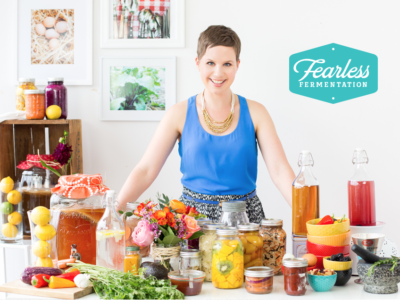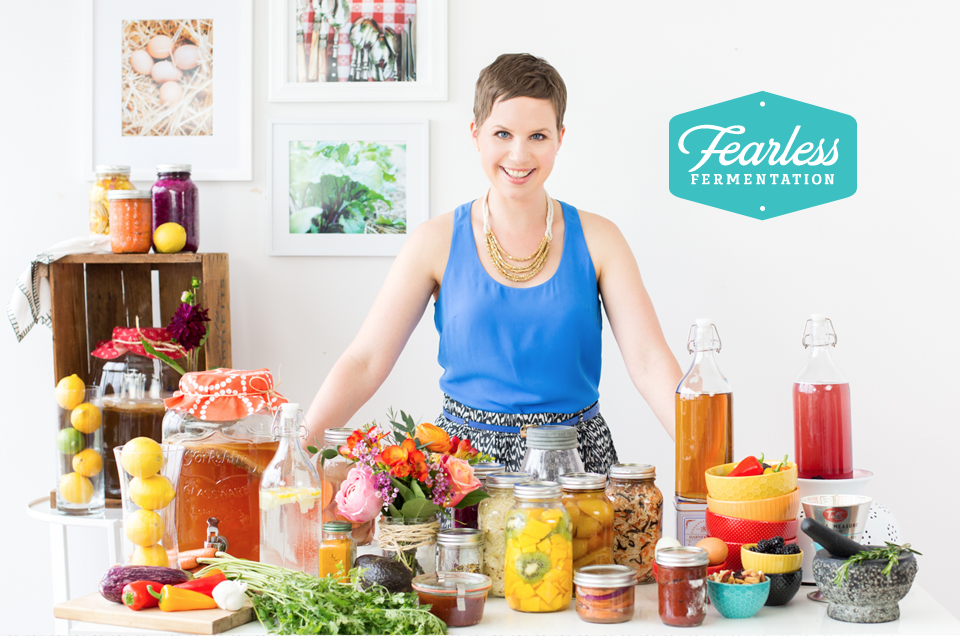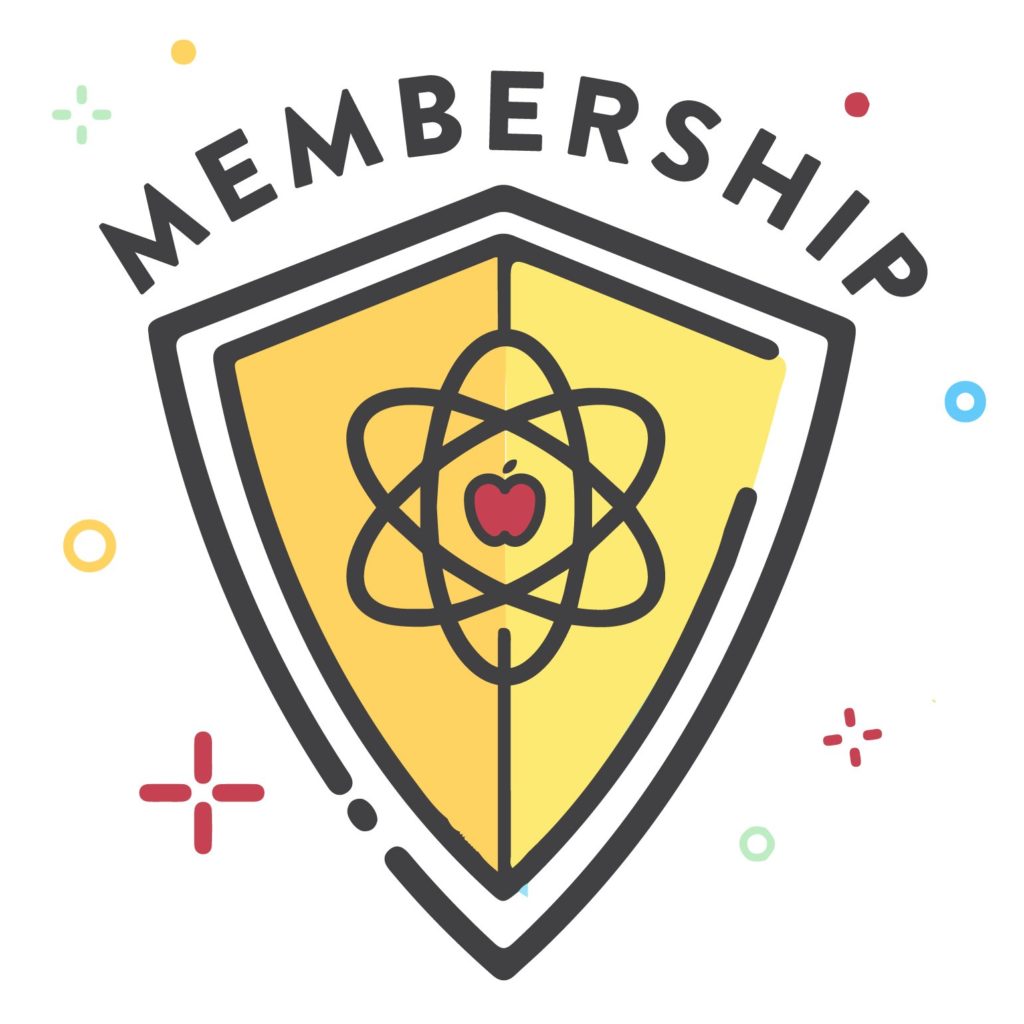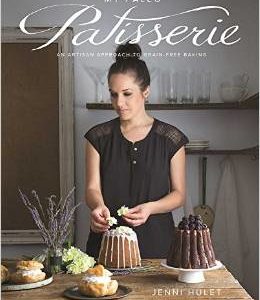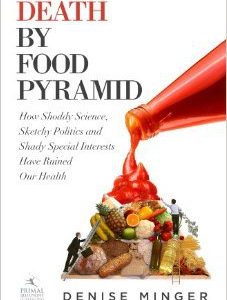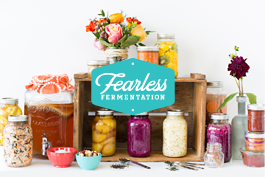 This review was written by my assistant Christina.
This review was written by my assistant Christina.
The Health Benefits of Fermented Foods have been well-established by scientific studies, but making them at home can still be intimidating!
Fearless Fermentation is a video-based beginner’s introduction to fermenting foods at home, hosted by nutritionist Sarah Ramsden. With Sarah’s accessible, thorough guidance, you’ll learn how to make sauerkraut, kombucha, water kefir, and fermented vegetables with high-quality videos and downloadable resources. Sarah left nothing out. Each class includes three short videos along with their transcripts. You’ll also get PDFs including a thorough troubleshooting guide (And I mean thorough! Sarah answers any and all questions about fermenting, so you’ll be a pro in no time!); a printable journal to help you keep track of what you ferment, how long you ferment it for, what other ingredients you add, and how well you liked the results; and a book of recipes, tips, and tricks for that class.
In the Sauerkraut videos, Sarah teaches you all about the science and how-tos of making this classic fermented vegetable. She’ll walk you through the benefits of sauerkraut, what materials you will need (spoiler: not many!), how to select your ingredients, how to personalize your sauerkraut with additional veggies and seasonings, what might be going on if you experience bloating after eating sauerkraut, and of course, a complete tutorial through the entire fermentation process! With a troubleshooting guide that includes FAQs like “How long will it keep in the fridge?”, “When is there the most healthy bacteria in my sauerkraut?”, and just about any other sauerkraut-related question you could think of, as well as a guide to what to expect for each day of fermentation and how to tell when it’s done, making your own sauerkraut has never been less complicated. Plus, the additional recipes are fantastic! Apple-Raisin Sauerkraut? Sign me up!
Save 80% Off the Foundations of Health
Expand your health knowledge on a wide range of topics relevant to you, from how to evaluate scientific studies, to therapeutic diet and lifestyle, to leaky gut and gut microbiome health, to sustainable weight loss, and much more!!!
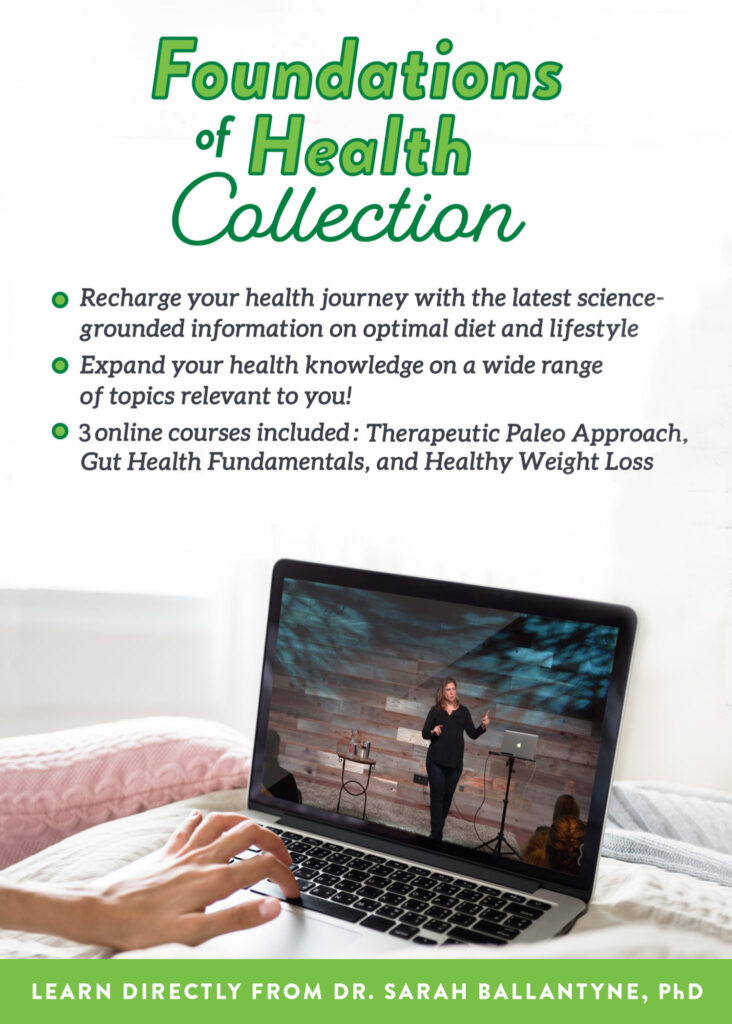
Kombucha is fermented sweet tea that can be flavored an endless number of ways. With the Kombucha series, you’ll learn about the history of kombucha, how the fermentation process works, what you’ll need to get started, how to grow your own SCOBY (the culture of bacteria and yeast that creates the probiotics), how to nurture it with small batches, and then how to graduate onto large batches so you can have a continuous supply. Sarah provides a step-by-step tutorial for every step of the process: Selecting your materials and ingredients including the different teas and sugars you can use, how to brew and bottle your kombucha (including tips for continuous brewing), and some flavors to start off with (Oolong Mango Mint, anyone?) as well as, again, the most in-depth troubleshooting guide you can imagine. I know I’m ready to get started!
Water Kefir is made from water kefir “grains” (so called because they look like little grains), a culture of bacteria and yeast that is added to sweetened water to begin fermentation. They can be used to make fizzy sodas, fermented juices, and even coconut water or coconut milk kefir. You’ll learn how to obtain water kefir grains, what types of water and sugar to use (and how to make the most out of what you have access to if it’s less than ideal), how long to ferment the grains, how to troubleshoot if they aren’t multiplying, how to store your kefir, how to flavor your first and second ferments, and what to do if it doesn’t look or smell quite right. Even as an experienced water kefir maker, I learned a lot of ways to improve the quality of my kefir, the health of my kefir grains, and new ways to flavor it!
In the last class, Fermented Vegetables, Sarah presents the different ways to ferment other vegetables: lacto-fermentation, wet brining, and dry brining (which is how the sauerkraut was made). She explains which vegetables make good ferments and how to select them, including tips if you can’t find or afford high-quality organic produce. For the tutorial, Sarah walks you through fermenting cauliflower with onion, garlic, and turmeric in a wet brine. After this class, you’ll be able to ferment pretty much any vegetable you like, so you can start experimenting and creating your own recipes!
In addition to the classes, Sarah provides tons of resources for learning about fermented foods, including what the benefits are, the differences between homemade and store-bought ferments, eating fermented foods versus taking a probiotic supplement, recovering from antibiotic use, troubleshooting food sensitivities, bloating, and other symptoms for things like SIBO and FODMAP intolerance (Sarah does not, however, discuss yeast intolerance), and troubleshooting issues such as mold growth with your homemade fermented foods. She also provides additional recipes and a page to help you find supplies and ingredients like mason jars, funnels, tea, SCOBYs, kefir grains, and glass bottles in North America. Plus, you’ll get access to a members community on Facebook to connect with Sarah and your classmates to swap tips, photos, recipes, and get all of your questions answered!
So, if you’ve been curious about fermented foods, confused about conflicting information online, can’t find or afford good-quality ferments probiotic supplements from the store, or are suffering from any health condition that might be due to a lack of probiotics in your diet, Fearless Fermentation is an excellent program to help you get started. Sarah leaves no stone unturned and she is a fantastic teacher. You know that old proverb, “Give a man a fish and he’ll eat for a day. Teach a man to fish and he’ll eat for a lifetime”? Well, the same goes for fermenting. You’ll get cheaper and higher-quality ferments with these homemade recipes. Fearless Fermentation is just $39.99, so it’s a great deal for a lifetime of healthy, probiotic-rich fermented foods!

